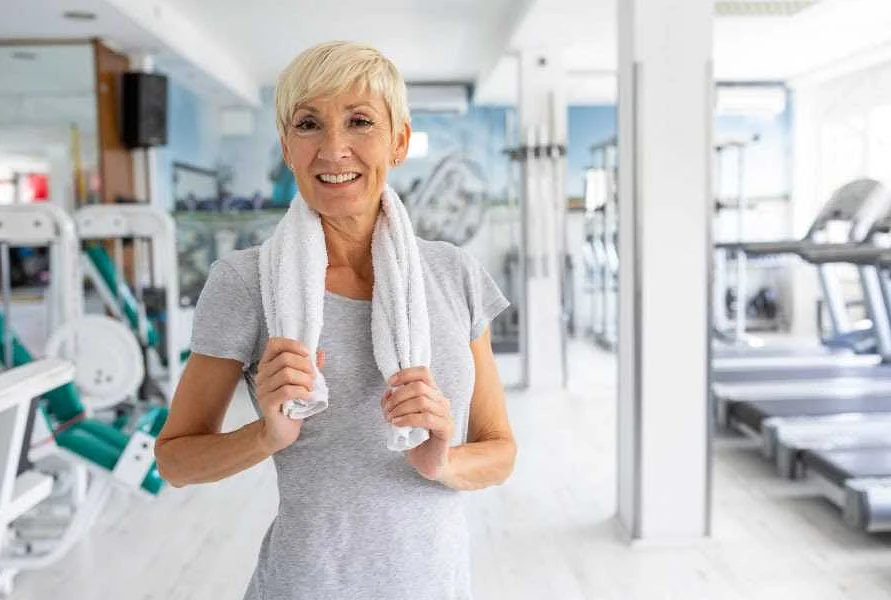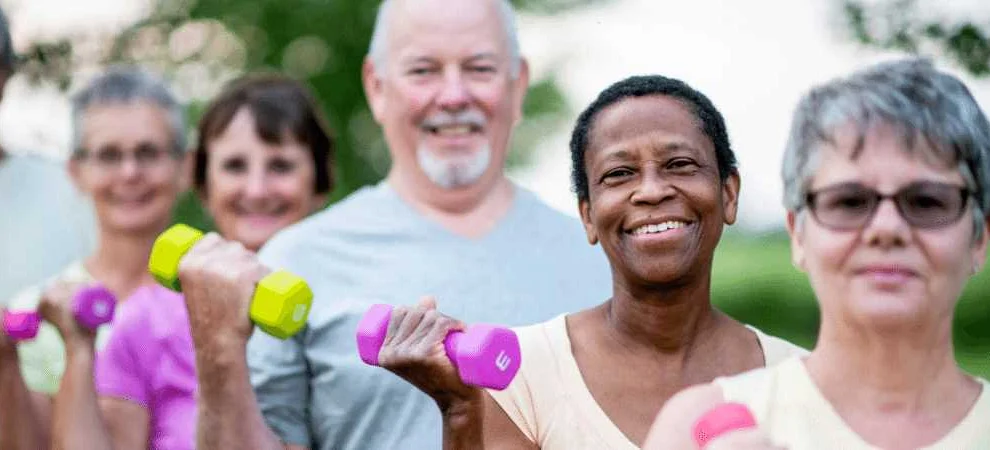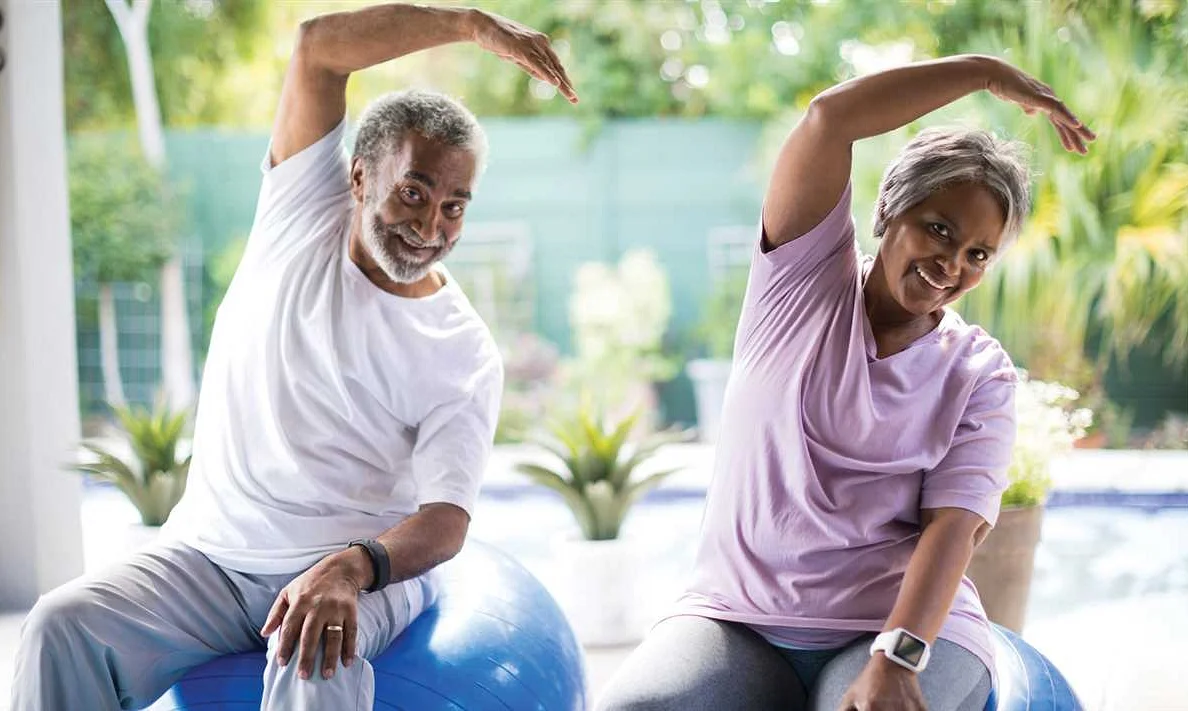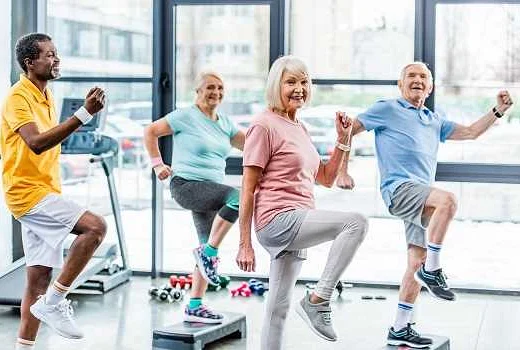Benefits of Exercise for Older People
Содержимое
Exercise in older people is important for maintaining physical health, improving cognitive function, and reducing the risk of chronic diseases. Learn about the benefits of exercise for seniors and discover tips for staying active and fit as you age.
As we age, it becomes increasingly important to maintain an active lifestyle and prioritize our health. Regular exercise is a key component of healthy aging, helping to improve both physical and mental well-being. Engaging in physical activity can help older individuals manage chronic conditions, maintain a healthy weight, and improve balance and flexibility.
However, it is essential to approach exercise in older age with caution and tailor it to individual needs and abilities. The needs of older individuals may differ from those of younger adults, and certain precautions should be taken to ensure safety and prevent injury. In this guide, we will explore the benefits of exercise for older people and provide recommendations and tips for staying active and healthy.
Exercise offers a multitude of benefits for older individuals. Regular physical activity can help reduce the risk of chronic conditions such as heart disease, type 2 diabetes, and certain types of cancer. It can also improve bone density and muscle strength, reducing the risk of osteoporosis and fractures. Additionally, exercise has been shown to enhance cognitive function, memory, and overall mental well-being.
Before starting any new exercise program, it is important to consult with a healthcare professional, particularly if you have any underlying health conditions or have been sedentary for an extended period. A healthcare professional can provide guidance on suitable exercise options and any precautions or modifications that may be necessary. Remember, it is never too late to start exercising and reap the benefits of an active lifestyle!
The Importance of Exercise for Aging Adults

Exercise plays a crucial role in maintaining physical and mental well-being as we age. Regular physical activity can help older adults stay independent and improve their overall quality of life.
One of the major benefits of exercise for aging adults is the maintenance of muscle strength and flexibility. As we age, our muscles naturally weaken and become less flexible, making it harder to perform daily tasks and increasing the risk of falls and injuries. Engaging in activities such as strength training, yoga, and stretching can help improve muscle strength and flexibility, reducing the risk of falls and maintaining mobility.
Exercise also has a significant impact on cardiovascular health. Regular aerobic exercise, such as walking, cycling, and swimming, can help strengthen the heart and improve circulation. This reduces the risk of heart disease, high blood pressure, and other cardiovascular conditions that are more common in older adults.
Maintaining a healthy weight is another important aspect of exercise for aging adults. Regular physical activity can help burn calories and prevent weight gain, as well as improve metabolism and body composition. This is especially important in preventing obesity and its associated health risks, such as diabetes, arthritis, and certain types of cancer.
Furthermore, exercise has positive effects on mental health and cognitive function. Physical activity releases endorphins, which are natural mood enhancers that can reduce feelings of anxiety and depression. Regular exercise has also been shown to improve memory, attention, and overall cognitive function, helping older adults maintain mental sharpness and reduce the risk of age-related cognitive decline.
Incorporating exercise into daily routines doesn’t have to be daunting. Simple activities like walking, gardening, dancing, or swimming can all provide significant health benefits. It is important to choose activities that are enjoyable and suitable for individual abilities and preferences.
In conclusion, exercise is essential for aging adults to maintain physical and mental well-being. It helps maintain muscle strength, improves cardiovascular health, supports weight management, and enhances mental health and cognitive function. By incorporating regular exercise into daily routines, older adults can improve their overall quality of life and stay independent for longer.
Benefits of Regular Physical Activity

Regular physical activity has numerous benefits for older people. It not only helps to maintain physical health, but also helps to improve mental well-being and overall quality of life.
1. Improved cardiovascular health: Engaging in regular exercise can strengthen the heart and improve blood circulation. This can reduce the risk of heart disease, high blood pressure, and stroke.
2. Increased muscle strength: Regular physical activity, such as strength training and resistance exercises, can help older adults maintain and increase muscle mass. This can improve balance, prevent falls, and enhance overall mobility.
3. Better flexibility and joint health: Regular stretching and flexibility exercises can help to maintain joint mobility and reduce the risk of joint pain and stiffness associated with aging.
4. Improved mental health: Physical activity stimulates the release of endorphins, which are known as “feel-good” hormones. This can help to reduce symptoms of depression, anxiety, and stress, and improve overall mood and mental well-being.
5. Enhanced cognitive function: Regular exercise has been linked to improved cognitive function and a reduced risk of cognitive decline and dementia in older adults.
6. Better sleep quality: Regular physical activity can help to regulate sleep patterns and improve the quality of sleep, leading to increased energy levels and better overall health.
7. Reduced risk of chronic diseases: Engaging in regular physical activity can help to lower the risk of developing chronic diseases such as diabetes, osteoporosis, and certain types of cancer.
It is important for older people to consult with a healthcare professional before starting any new exercise program to ensure safety and to address any specific health concerns or limitations.
Types of Exercises for Older Adults

Exercise is important for maintaining physical and mental well-being in older adults. There are several types of exercises that can be beneficial for seniors:
- Aerobic Exercises: These exercises increase heart rate and breathing and improve cardiovascular fitness. Examples include walking, swimming, cycling, and dancing.
- Strength Training: Building and maintaining muscle strength is important for older adults. Strength training exercises can be done using weights, resistance bands, or body weight exercises like push-ups and squats.
- Balance Exercises: Improving balance can help prevent falls, which are a major concern for older adults. Balance exercises can include standing on one leg, walking heel-to-toe, and Tai Chi.
- Flexibility Exercises: Stretching exercises help maintain or improve flexibility and range of motion. Yoga and Pilates are great options for improving flexibility in older adults.
- Functional Fitness Exercises: These exercises mimic everyday activities and help older adults stay independent and able to perform daily tasks. Examples include carrying groceries, climbing stairs, and getting up from a chair without using hands.
It’s important for older adults to consult with a healthcare professional before starting any new exercise program, especially if they have any underlying health conditions or concerns. Starting slowly and gradually increasing intensity and duration of exercises is recommended to prevent injury.
Tips for Getting Started with Exercise

Starting a new exercise routine can be challenging, especially for older adults. However, with the right mindset and approach, it can be a rewarding and enjoyable experience. Here are some tips to help you get started:
1. Set realistic goals: Start by setting achievable goals that align with your fitness level and lifestyle. This will help you stay motivated and track your progress.
2. Consult your healthcare provider: Before starting any exercise program, it’s important to consult with your healthcare provider, especially if you have any underlying health conditions or concerns.
3. Choose activities you enjoy: Find activities that you enjoy doing, as this will make it easier to stick with your exercise routine. Whether it’s walking, swimming, dancing, or gardening, make sure it’s something you look forward to.
4. Start slow and gradually increase intensity: It’s important to start slow and gradually increase the intensity and duration of your exercise sessions. This will help prevent injuries and allow your body to adapt to the new routine.
5. Listen to your body: Pay attention to how your body feels during and after exercise. If you experience pain or discomfort, it’s important to modify or stop the activity. Don’t push yourself too hard, especially in the beginning.
6. Stay consistent: Consistency is key when it comes to maintaining an exercise routine. Aim for at least 150 minutes of moderate-intensity aerobic activity, such as brisk walking, every week, along with strength training exercises twice a week.
7. Find a workout buddy: Exercising with a friend or family member can make the experience more enjoyable and help you stay motivated. You can encourage and support each other throughout your fitness journey.
8. Warm up and cool down: Before and after each exercise session, be sure to warm up and cool down properly. This can help prevent injuries and improve flexibility.
9. Stay hydrated: It’s important to drink plenty of water before, during, and after your exercise sessions to stay hydrated and replace any fluids lost through sweat.
10. Have fun: Most importantly, have fun! Exercise shouldn’t feel like a chore. Find activities that bring you joy and make you feel good. Remember, it’s never too late to start and reap the benefits of regular exercise.